
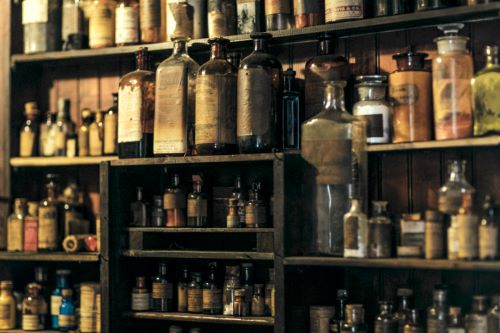
There were few apothecary shops before 1800.

By Dr. Gregory J. Higby
Senior Academic Curator/Senior Lecturer
American Institute of the History of Pharmacy
University of Wisconsin-Madison
Introduction
In his piece on “The Emergence of Pharmaceutical Science,” John Parascandola wrote, “the . . . community pharmacy never played a significant role in this country in the development of the . . . sciences, as it did in Europe where many practicing pharmacists made important scientific discoveries in the backroom laboratories of their pharmacies (1).” It would be difficult to disagree with this well reasoned conclusion; yet anyone who examines the American pharmacy literature of the 1800s will be struck with the vast number of notes and articles on a broad range of scientific subjects. Chemistry was a favorite topic of pharmacy writers and backof-the-shop investigators. Some of the roots of this interest and activity are explored in this short paper.
The Beginnings of American Pharmacy
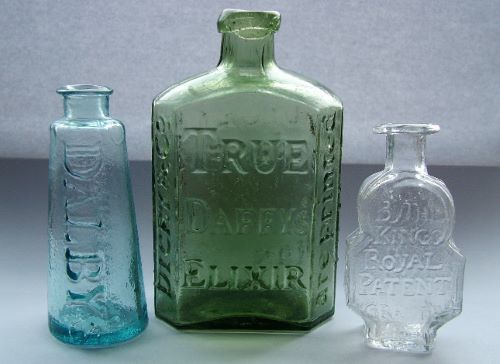
Although the pharmacy had origins going back to medieval Europe, what became the American drugstore arose in the early 19th century from four roots: the traditional apothecary’s shop; doctor’s shops — where physicians prescribed and dispensed; the general store; and the wholesale druggist.
There were few apothecary shops before 1800. Before the expansion of medical education that occurred in the early 19th century, physicians were few and far between and located mainly in cities and towns. These practitioners dispensed their own medicines usually compounded by their apprentices. Apothecary shops and wholesale druggists provided drugs and medicines to these dispensing physicians as well as the general public. Women in the household usually handled most domestic medical chores including administering simple teas or laxative preparations purchased from apothecaries or general stores. To operate successfully, apothecaries needed to understand rule-of-thumb chemistry to manufacture common preparations and popular compounds. They also had expertise in handling related items usually lumped together with drugs, such as dyes, oils, and paints.
Doctor’s shops were probably just as prevalent in the early 1800s. Self-styled physicians—there were no effective laws regulating medical or pharmaceutical practice—diagnosed and dispensed medicines in an environment that was not much different from that of an apothecary’s shop. In fact, men often went back and forth between the two occupations, depending on their comfort level.
Without regulations in place, general stores were free to sell medicines of all sorts including opiates. Usually they kept their medicine departments simple: packaged herbs and patent medicines. In contrast with apothecaries, these shopkeepers made no claims to special expertise. They did not have a backroom laboratory or the requisite heat, water, and necessary apparatus.
Druggists
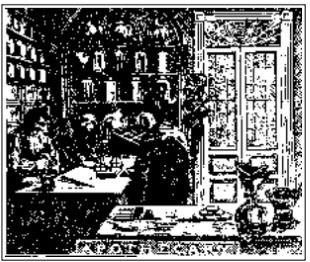
Oddly enough, the last and smallest group in number—the druggists—was perhaps the most significant for the development of American pharmacy. The Revolutionary War had forced druggists to learn manufacturing techniques to replace missing chemicals imported from England. “Thus, to be able to detect adulterations and to do their own manufacturing, they became highly interested in a better knowledge of drugs and chemicals (2).” When wholesaler Thomas Atwood in New York City was looking for a partner in 1784, he placed an ad for a “man of abilities. He must understand pharmacy thoroughly, and he should be grounded in chemistry(2).” In Boston in 1795, a druggist put out a pamphlet with the title, “Catalogue of drugs and medicines, instruments and utensils, dyestuffs, groceries, and painters’ colours, imported, prepared, and sold by Smith and Bartlett at their druggists store and apothecaries shop (2).” Often businesses that had started out as wholesale drug storehouses opened front ends to the public and moved into retail, calling themselves drugstores.
These druggists were among the earliest manufacturers of general chemicals in the United States (3). John Harrison of Philadelphia, for example, established the first manufacturing facility for sulfuric acid in the United States in 1793. After the beginning of the 19th century, a significant number of druggists and apothecaries expanded into chemical manufacturing. As Haynes put it, “The ‘laboratory’ of every apothecary shop was an embryo chemical manufacturing plant (4).” The War of 1812, again cutting off English goods, greatly helped domestic industry. Firms founded by apothecaries, such as Farr and Kunzi, came to dominate the preparation of alkaloids after the isolation of quinine in 1820 by Pelletier and Caventou.
Literature
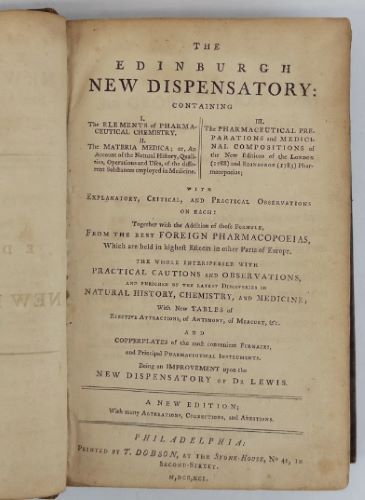
It is no accident, therefore, that the popular pharmaceutical texts of the young republic placed a premium on chemical knowledge. The first American publication of a pharmaceutical “best seller” was the 1791 edition of the Edinburgh New Dispensatory. Thomas Dobson of Philadelphia put this out as a pirated duplication of Andrew Duncan’s 1789 book from Scotland. Its first page begins (5):
Pharmacy is the art of preparing, preserving, and compounding substances for the purposes of medicine. This art has . . . commonly been divided into two branches, Galenical, and Chemical pharmacy. But for this division there is no just foundation in nature . . . even the most simple pharmaceutical preparations are to a certain extent chemical.
The work then goes into a brief introduction on the principles of chemistry.
The first fully American work with a large impact was The American New Dispensatory by James Thacher, published in 1810. Thacher used the Pharmacopeia of the Massachusetts Medical Society, published in 1808, as the fundamental compendium for his work (6). Again, this book was aimed at both physicians and apothecaries, and like Duncan it referred to chemistry right away in its first sentence (7):
Such has been the series of improvements in chemical Science for the last thirty years, that Dispensatories and Pharmacopeias have in constant succession been superseded and rendered obsolete.
Thacher goes on to tell readers what made this chemical knowledge so appealing (7):
Chemistry . . . enables us, by the use of proper solvents, or by the due application of heat, to separate those proximate principles of vegetables in which their virtues reside, from other inert or noxious matter with which they may be mixed; it ascertains how far these processes are useful, points out those changes in composition by which the virtues of the substances acted on are frequently altered, and the means by which such injuries may be lessened or prevented.
The most important early pharmaceutical work in the young nation was the Pharmacopoeia of the United States of America (USP), published in 1820. Two physician-chemists of the era, Samuel Latham Mitchill and Lyman Spalding, were the instigators of this enterprise. The primary list of drugs, numbering 217, included 41 chemicals, such as ferrous sulfate, potassium nitrate, and calcium carbonate. After obtaining these, the apothecary was expected to make up a wide variety of new compounds or preparations according to official recipes for items such as potassium tartrate, calomel (mercurous chloride), and silver nitrate (8).
Philadelphia College of Pharmacy
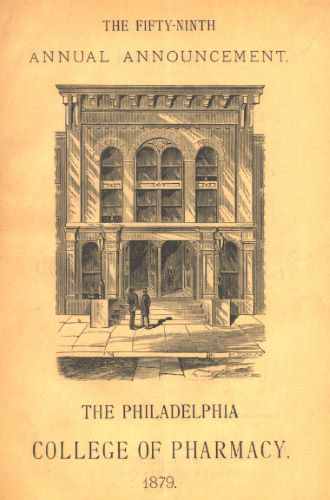
Soon after the USP appeared, a group of druggists and apothecaries, gathered in Philadelphia, founded the Philadelphia College of Pharmacy, the first local pharmacy organization in the United States. The college quickly established a school of pharmacy, with two physician-professors: Samuel Jackson to teach materia medica with pharmacy and Gerard Troost to teach chemistry (9). Physicians continued to dominate chairs in chemistry at colleges of pharmacy up through the Civil War.
The school of pharmacy succeeded in Philadelphia, and other cities established local societies and schools. Yet, most of the other schools never materialized or else died quickly. They did not have the base of support provided by the manufacturing and wholesaling sectors in the Philadelphia area, which dominated the trade. These firms supported the school and encouraged their apprentices to attend night classes primarily to obtain chemical instruction. In sharp contrast, almost all other American pharmacists learned their trade only through apprenticeship.
In 1825 the four-year-old Philadelphia College of Pharmacy started another risky enterprise: a new journal—the Journal of the Philadelphia College of Pharmacy. Soon renamed the American Journal of Pharmacy, it was the first English-language pharmacy periodical and one of the earliest American specialty journals in science (11).
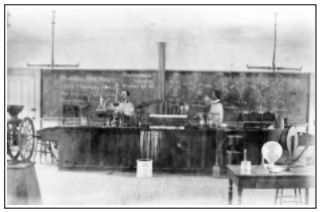
Leafing through its pages, we see what most of us might expect looking back 177 years: articles on the art of pharmacy, that is, how to take basic ingredients and combine them into dosage forms of medicine. We would not be surprised to find pieces on the topic of materia medica: that is, the sources of drugs, their form and function, and medicinal activities. We would find the first article published was written “On the Preparation of Glauber’s and Epsom Salt and Magnesia, from Sea Water (12).” This is straight inorganic chemistry. The issues that followed were filled with similar articles on various mineral salts or the new alkaloidal chemistry (13). A rough count in the early years of the journal shows a division of articles in this proportion: about 1/3 chemistry; 1/3 materia medica; and 1/3 practical pharmacy: This triad of the pharmaceutical field persisted up through the late 1800s.
The early editors of the American Journal of Pharmacy were physicians connected with the College who supported the growth of the young profession. They knew well the model of practice on the continent—physicians prescribing and apothecaries compounding—and wished to encourage it in the United States. A well-trained apothecary corps was essential.
For the small pharmaceutical elite, the fostering of chemistry was a key component to advancement. Daniel B. Smith, president of the Philadelphia College of Pharmacy, reflected this attitude when he addressed the graduates in 1837 (14):
[T]he steady march of improvement which has elevated our profession . . . is mainly due to the ability with which its members, in France and Germany, have cultivated the science of chemistry.
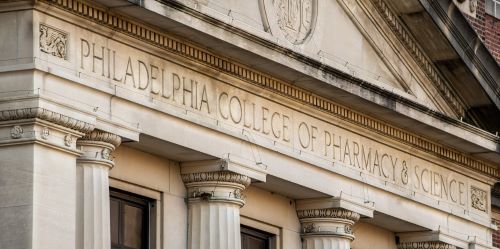
Smith and his colleagues greatly sought recognition from the public and especially from physicians. They began calling themselves “pharmaceutists”—perhaps emulating French pharmaceutical chemists—to distinguish themselves from common apothecaries. They had not yet made any great discoveries but they could claim a professional connection with the likes of Sertuerner, Pelletier, and Caventou. At this time, apothecaries were generally viewed as a special group of shopkeepers, and it frustrated the elite of the American occupation that well trained “pharmaceutists” were not receiving the respect they deserved. They did not deny that they were subservient to physicians, but they wanted an appropriate status for their “professed” expertise, which included chemistry (15). As Smith stated (14):
In this stage of improvement in the science of organic chemistry, it is . . . of the utmost importance for the members of our profession, to devote their labors to its further advancement and to appropriate to our peculiar department, the rich fruits of the labours of continental Chemists.
Smith concluded (14):
When this revolution in organic chemistry is effected, our shops, instead of being filled with tinctures [of doubtful] character, . . . will contain certain acids and bases and salts, unalterable by age, and capable of the same extemporaneous use and preparation as the salts and bases in common use. It is to this approaching and inevitable change in the character of Pharmacy that I wish to call your attention and invite your aid.
Smith’s challenge to the graduates was typical of the era. The first generation of educated pharmaceutists was asked to go out and prove their profession’s worth in their backroom laboratories. Chemical investigation was going to elevate the American profession as it had on the continent.
Smith’s address led off the June, 1837 issue of the American Journal of Pharmacy, sent to all members of the college and subscribers across the nation. The very next page contained the inaugural essay by recent graduate, William Procter, Jr. The brightest student in the school’s history, Procter had followed his teachers’ directive and isolated an active proximate principle from Lobelia inflata. Unfortunately, Procter did not have the equipment to do a definitive analysis of the alkaloid (16).
Procter’s experience illustrates a problem with the idealized vision put forward by Smith and his contemporaries: the few American pharmacists who had the desire and ability to do chemical investigations lacked the time and apparatus to complete their efforts (17). Moreover, pharmaceutical chemistry in Europe was leaving the cramped back rooms of shops for better equipped and staffed laboratories in industry and academe (1).
Drug Quality Concerns
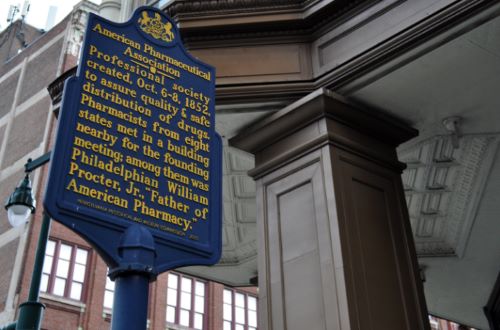
The 1840s brought a new problem to American pharmacy that chemistry seemed ready to solve. As European countries tightened down on drug adulteration within their borders, poor quality crude drugs made their way to the shores of the United States. Some adulterations were simply mechanical such as bullets added to opium cakes; others were more sophisticated such as mixing blue clay in with blue pill mass (18). In addition, alkaloidal chemistry allowed European firms to extract the active constituents from botanicals and export the exhausted remains as whole to foreign markets. As one Congressional committee put it (19):
This country [has] become the grand mart and receptacle of all the refuse merchandise, . . . not only from European warehouses, but from the whole eastern world.
The American Journal of Pharmacy was filled with articles long and short on detecting drug adulterations and sophistications. Pharmacists proudly portrayed themselves as the most reliable monitors on drug quality. The problem came to a head during the Mexican War, when newspapers reported a high number of deaths among soldiers from disease rather than combat. Army physicians blamed poor quality drugs. Congress quickly passed the Drug Importation Act of 1848 after lobbying by the young American Medical Association. The law called for port inspectors, who were soon appointed. They had trouble, however, rejecting crude botanical drugs when few recognized positive standards existed. They had manuals for analysis but the inspectors needed an approved set of concrete minimum percentages of active ingredients. Some authority needed to step forward to provide this (20).
A New York physician who ran an apothecary shop, C. B. Guthrie, turned his attention to the task. He issued a call for a national convention of pharmaceutists and druggists, to take place in New York City on October 15, 1851. The various colleges of pharmacy across the nation were invited to send delegations of three to the convention to draw up standards for inspectors and to consider “the proposal of any measures that might be calculated to elevate the profession, and to promote their interests throughout the country (21).” The pharmacists who gathered drew up a set of standards based on the best contemporary knowledge. For example, opium needed to contain at least 7% morphine by weight. The standards were warmly received by some inspectors, but the system eventually broke down from cronyism and corruption (22). Still, the pharmacy group decided to meet again in Philadelphia the next year to establish a national society, the American Pharmaceutical Association (APhA).
APhA and Chemistry
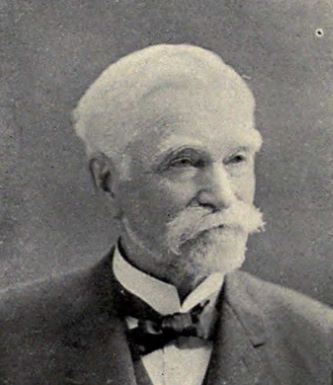
The young association was dominated by prominent apothecaries and druggists, especially from the Philadelphia area, who wanted to elevate the reputation of their occupation. Concerned about the general quality of apprenticeship training, they sent out a survey across the nation. The committee that reported to the 1853 APhA convention was shocked by the state of affairs (23):
The larger number of those who deal in drugs and medicines do it solely to make money; they aim at making the most out of the least outlay of capital or trouble; to sell medicines is their vocation; and he is the best [apprentice] who can sell the most, under whatever circumstances . . . . To avoid the necessity of gaining the requisite knowledge of practical pharmacy, it is no uncommon habit to buy their preparations ready made, except the simpler ones, and at the lowest price, and the business, thus shorn of its most interesting department, the application of chemistry to the conversion of crude drugs into medicines, becomes a mere store keeping, where the [apprentice] is kept putting up and selling parcels and bottles of medicines, the preparation of which, and the beautiful reactions often concerned in their manufacture, he is as complete a stranger to as though they do not exist.
The committee and the year-old association were at a loss for what do. They looked on during the 1850s as the retail pharmacy sector exploded. While the per capita number of physicians stayed steady, the number of drugstores increased by nearly 25%. And many, if not most, of these were run by “mere shopkeepers.” For keepers of the professional flame there were different solutions. Some championed laboratory work and the glorious search for alkaloids; others like Edward Parrish called for pulling together the wide gamut of practitioners into a “one [grand] professional fraternity,” that is, the APhA and then educating them via the organization (24).
In 1858, William Procter, by then professor of pharmacy at PCP, editor of the American Journal of Pharmacy, and a shop owner as well, went before the APhA convention and addressed in his gentle way the dilemma facing the American profession at mid-century. He gave a short paper entitled “Thoughts on Manufacturing Pharmacy (25).” Procter was most concerned with galenical preparations—the traditional tinctures and extracts of plant drugs—but all official drugs were included. If apothecaries bought these preparations ready-made, they were on the road to becoming “mere shopkeepers” who would pass their ignorance to their apprentices (26). Procter was caught in a bind, however, because many of the owners and operators of the Philadelphia firms were his friends, like Daniel B. Smith and William Hodgson. And he could not guess that two of his own students, named Wyeth and Wellcome, would lead the effort to mass produce end dosage forms.
During the 1860s the APhA reacted to the declining level of expertise with a wide variety of programming. A committee on queries assembled scientific topics for volunteers to investigate and describe at future conventions. An annual report on the scientific progress of pharmacy was included in every annual association proceedings. Committees drew up syllabi for preceptors to use when guiding the studies of apprentices. None of these efforts could stem the tide. Wedded to the traditional apprenticeship model of training, the elite could not find a method for guaranteeing adequate scientific instruction, especially in chemistry
Prescott
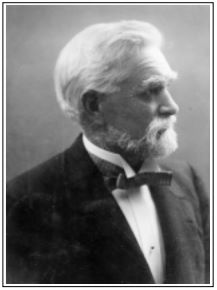
In 1871, the University of Michigan College of Pharmacy sent a delegate to the annual APhA convention. His name was Albert B. Prescott, and he was the head of Michigan’s three-year-old program. (He was president of the American Chemical Society in 1886.) Although he was a physician-chemist of high repute, Prescott’s credentials as a delegate were rejected by the convention; but he was invited to stay on as an individual member. The body of the association argued that the Michigan program was not a true “college of pharmacy” since it did not require apprenticeship experience to receive a diploma. All the other schools required apprenticeship because it was believed that preliminary experience in a shop, wholesaler, or manufacturer was essential before going through the “finishing” of formal instruction.
Not being a shy individual, Prescott returned the next day to the convention with a short paper. Entitled simply “Pharmaceutical Education,” this strong attack on the status quo began (27):
The conditions of pharmaceutical apprenticeship in this country, constitute a subject of regret to all thoughtful observers. . . . In a large number of instances, the apprentice is led to perform mechanical labor in blind ignorance of the nature of the material with which he deals; he becomes habituated to a feeble and automatic mode of action, and hence, too often, he never afterward breaks through to the light. Elementary text-books on chemistry and botany are not placed in his hands; he learns to refer to official and non-official authorities, and to follow after statements and methods which he does not understand; and, too often, he finally ceases to ‘wonder why’ he does this or that. The history of processes of preparation, and the discussion of physical and chemical ways and means are in a tongue unknown to him.
As an analytical chemist, Prescott was especially discouraged (28):
From this apprenticeship, the young man emerges into responsible dealing in a trade abounding in adulterations and substitutions, low standards and shrewd deceptions. From this beginning, year after year still leaves him at the mercy of wholesale deceptions, innocent of the wrong done under his hand, if we may term him innocent whose ignorance places human life in daily jeopardy.
As a college professor, Prescott witnessed the growing demand for science instruction in the technological vocations. He argued strongly that it was imperative for pharmacists to receive this education in a college laboratory before shop experience. Lastly, Prescott acknowledged the value of requiring practical experience before graduation but he criticized the lack of any requirement for college laboratory training. He recognized the “useful services” the “colleges have performed in keeping pharmacy alive” but could not support their fundamental lack of modern science training (29).
The paper elicited a few harsh responses from the APhA convention. John Maisch of the PCP was especially incensed by Prescott remarks. He claimed that nothing was done to prevent students from studying chemistry before entering the shop for apprenticeship. Students may also study chemistry individually in the laboratories of individual instructors. He had to admit, however, that laboratory instruction was not yet required anywhere other than at Michigan. “But Rome was not built in a day,” Maisch lamented, “[it] will gradually come (30).” In fact, the alumni association at PCP had just constructed a laboratory for the use of their students with Maisch as its director. It was not yet required, however, and laboratory instruction did not become a significant part of their curriculum until 1878 (31).
At that 1871 APhA convention Prescott later read another paper on “Sulphophenic Acid and its Salts,” which was accepted for publication. One must credit the Association for its openness. It published Prescott’s scathing critique of pharmacy education even though no one agreed with his position (32).
The open forum and cordial scientific exchange kept Prescott coming to APhA meetings after 1871. He was elected third vice president in 1885 and president of the Association in 1899. In 1900 Prescott was elected the first president of what is today called the American Association of Colleges of Pharmacy. By then his model of laboratory-based pharmacy education had triumphed, helped in large part by forces outside the profession.
Modernization of American Pharmacy
The late 19th century brought considerable change to pharmacy. With most basic preparations now available from drug companies, anyone with enough courage and capital could open up a drugstore. The number of pharmacists grew enormously, and the quality of prescriptions dispensed declined accordingly.
In response to public and professional concern, effective state laws regulating pharmacy were enacted across the nation in the 1870s, 1980s, and 1990s. State boards of pharmacy examined prospective pharmacists to ensure minimum competence, stimulating the growth of educational opportunities. Apprentices sought out chemistry instruction to pass state licensing exams. An influx of new state-affiliated pharmacy schools in the 1880s and 1890s helped to raise the level the practice significantly. Many like the University of Wisconsin combined laboratory science with an experiential requirement for graduation (33).
New and more effective drugs entered the scene in the late 1800s, including synthetics such as antipyrine, acetanilide, phenacetin, and chloral hydrate. Greater uniformity came to galenical preparations, pushed forward by the modernization of the United States Pharmacopeia. Large-scale manufacturers began moving into the production of end dosage forms as well (34).
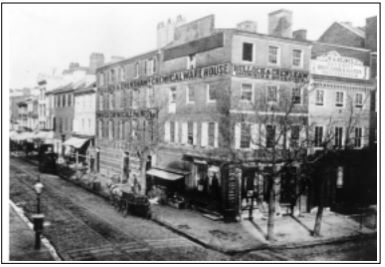
The new generation of professional leaders like Joseph Remington shifted their emphasis away from the rear guard action of keeping manufacturing in the shop and toward publicizing the skills of pharmacists as master compounders. Only they could put together the “tailor-made” prescriptions written by physicians to meet the special needs of individual patients. Chemical expertise was vital for preventing prescription incompatibilities (35). A few pharmacists branched out into analysis work, and there was a movement to advertise pharmacists as “chemists on the corner,” but the previous urgency had died away.
At the APhA annual conventions the scientific enterprise constructed in the 1850s and 1860s progressed slowly. The 1898 APhA Proceedings contained the massive “Report on the Progress of Pharmacy”: 500 pages of article abstracts, including 230 pages devoted to inorganic and organic chemistry (36). The Ebert Prize, which the association first awarded in 1874 for the best scientific article in pharmacy, was given to James Knox and Albert Prescott for “The Caffeine Compounds of Kola (37).” Over the years, more than 1,000 queries had been put forward by APhA committees with about 300 of them being chemical in nature. They varied from “Do any of the best samples of sulphuric and other mineral acids of American origin contain appreciable amounts of arsenic (38)?” to “Is there a crystalline active principle in capsicum (39)?” Papers on preparing chemical compounds in shop continued into the 1880s but elicited little discussion (40). As the years went forward to 1900, chemistry queries shifted primarily to assaying. With interest in laboratory work declining, the committee brought forward issues concerning the suppression of quackery and commercial problems. Questions concerning preparations dropped off as large-scale manufacturers took over the making of not only ingredients and preparations but entered the field of end dosage forms. The corner pharmacist could not match the elegance of the modern sugar-coated pills or the low price of the machine-made tablets that appeared at century’s end. By 1900, one young woman in a factory could operate a pair of machines punching out 100,000 headache tablets a day. Compounding, the crux of professional practice in the late nineteenth century, started its great decline (41).
Drugstore Evolution
Changes in practice and technology altered the face of the drugstore as well. Before the Civil War, pharmacists put their compounding areas near the front of their shops to benefit from the natural light from windows and to demonstrate their professional abilities. By the 1890s, stores were rearranged with the prescription table moved to the back of the shop, pushing out most of the old laboratory area. This opened up the front for more profitable goods such as tobacco products and candy. Above all else, the shift of pharmacy practice to the back of the shop gave the soda fountain front and center position. Ironically, it was the pharmacist’s practical chemistry expertise that allowed him to make up flavorings and to handle temperamental carbonated water generators. Some pharmacists turned their inventiveness to developing new soft drinks, including root beer, Dr. Pepper, and Coca Cola. Unfortunately, the public soon came to see pharmacists more as sellers of chocolate sodas than health care professionals (42).
A few retail pharmacists continued their backroom laboratory pursuits well into the 20th century, but the serious work was taken over by a new generation of university trained scientists who staffed the new state-supported colleges of pharmacy. Young men, fascinated by the application of chemistry to pharmaceutical problems, bypassed drugstores to find positions in academe, industry, or government. Those who remained found that scientific discoveries made elsewhere continued to contribute to the stature of pharmacy. The striving for full professional recognition based on educational accomplishments, however, would continue for another half century (43).
Conclusion
In 1821 the Philadelphia College of Pharmacy began training the first generation of professional leaders, inculcating the importance of chemical expertise and the potential glory that awaited the discoverer of the newest active principle. During the middle of the century, these leaders carried the message out to the greater world of pharmacy through the pages of the American Journal of Pharmacy and the meetings of the American Pharmaceutical Association. As large-scale manufacturing of preparations increased in mid-century, spurred by the Civil War, pharmacists turned away from making their own compounds. Because of the apprentice-based training model, pharmacy was confronted with a crisis: how would apprentices learn their chemistry when chemicals and compounds were simply bought from wholesalers? Through their journals and societies, the elite of pharmacy tried to battle this trend. Pharmacy was rescued from becoming “mere shopkeeping” by a combination of factors: the rise of the state-supported school of pharmacy, the passage of state licensing laws, and the development of a cadre of academically trained pharmaceutical scientists. The hard fought ascendancy of this latter group made the chemical sciences the centerpiece of American pharmaceutical education for most of the twentieth century.
See references and notes at source.
Originally published by Bulletin for the History of Chemistry 28:1 (2003, 9-17) under an Open Access license.


